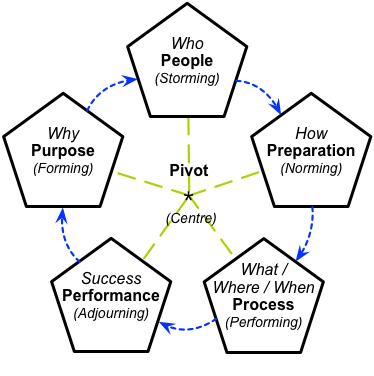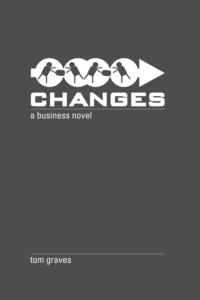Still here, still busy
Yeah, I’ll admit I’ve gone a bit quiet recently. Over here on this blog, at least.
But it hasn’t been that I haven’t been doing anything. There is a lot that’s going on at present – though most of it is kinda behind the scenes, you might say?
Probably the most visible item was the BCS EASG conference (British Computer Society Enterprise Architecture Special-interest Group), led by Daljit Banger. My session was a sort of mini-workshop on ‘How to build continuous-learning into architecture-practice‘, for which the slidedeck is here:
As you’ll see, it includes a kind of test-run for the rework of the Five Elements model/method that I’ve been developing with graphic designer Joseph Chittenden. This uses colour-coding to help emphasise its use of recursion, and also supports a shift from the old rather-too-abstract visualisation:
…to a form that emphasises the question being addressed, and is literally more human-centred:
You’ll also see that change in emphasis reflected in the new logo and branding that Joseph has been developing for me, with a shift toward the term ‘maker of tools for change‘ – such as you’ll see in the new header for this weblog.
Joseph also did all of the graphics for my new business-novel ‘Changes‘:
The core of the novel is that it uses the Five Element model to guide the change-process that’s described throughout the story – and again, Joseph’s new graphics reflect this emphasis on the human element in all aspects of change, in business and elsewhere.
So yes, the work on ‘the bucket-list‘ is coming on fairly well now: and yes, a huge ‘Thank you!’ to all those who’ve helped with funding for this – perhaps particularly Michael Smith, Gavin Beckett and Daniel Faucitt, each of whom have come up with very real support in this, in different forms, when I needed it most.
Which brings me to the next item: setting up a Patreon subscription-based fundraiser for the ‘bucket-list’ work, which various people have for months now been pushing me to do. It’s not quite ready yet, but it should be ready for launch within the next few days. (When it does launch, the Patreon ID will be ‘tetradian’ – i.e. https://www.patreon.com/tetradian – but I’ll do a separate post to publicise when it’s actually done.)
The tricky bit with Patreon is in deciding what the Rewards structure should be – in part because anything to do with money is incredibly hard for me anyway, but also because I don’t yet know what you want, what you would like in return for each subscription-funding level. What I’ll probably do is start simple, with just a handful of basic levels ($1/month, $3/month, maybe $5/month), and ask you there if you want to push it further upward to higher levels ($10/month, $20/month, maybe even more?), in return for earlier-access, active engagement in setting priorities, or customised context-specific tools and suchlike. It’s something to explore there, anyway.
The other item I’ve been doing a lot of work on over the past few months is also starting to move towards a more publishable form. This is intended to be a whole series of books and more, called The Viner Codex, based on the tag-line:
Weird politics.
Weird plant-things.
Weird battles in which nobody dies.
On the surface, it’s a mixture of alternative-history sci-fi but still as close to hard-science as I can make it. The latter is where the ‘weird plant-things’ reference comes from: think steampunk but stretched a couple of centuries further back, and where the science-type bit is not steam and suchlike, but more what you might expect from the equivalent of present-day gene-splicing done via the type of technologies available to people like Newton, Halley and Hooke. Should be fun: at the least, I hope that part works well enough just as a storyworld in its own right.
But the other aim is to extend and illustrate what I’d done here on RBPEA – all those posts on ‘Really Big-Picture Enterprise-Architecture’ and the like. That’s the background behind those references to ‘weird politics’ and ‘weird battles where nobody dies’: that part starts from a real event called the Putney Debates, way back in 1647, but imagines that the outcome of those debates went the other way to what we ended up with in our own timeline – leading to a polity that is hugely different from our own. It should be challenging, I trust, yet also engaging – maybe even hopeful, in terms of what we could yet still achieve for our own shared future.
So far I’ve planned out the plot-lines and more for a full trilogy, set in three different periods from the 1850s to the 1910s – although in theory at least I have almost four hundred years of history to play with for this, not to mention all manner of other possibilities for future worlds too. But to keep it grounded in our own everyday reality, there’s also a kind of ‘spine-story’ – call it ‘Volume Zero’, maybe? – that’s set in the present-day in our timeline, with a guy who, almost by accident, finds himself becoming more and more tangled up with this not-so-alternate world, and acts as our narrator into that otherworld.
The first main story in the trilogy is coming on well, though it probably won’t be out in published form until late in the year. And there’ll be a separate Patreon for this overall project too, with a probable launch somewhen around the start of September. But this spine-story is made up of small segments that fit well with a blog-type structure, which I’m setting up to start publishing online within the next week or two, to help build up a bit of momentum for the broader story itself.
Right now the website is in very preliminary form – just a basic WordPress setup with a default theme, and only the first twenty or so story-fragments uploaded so far, out of perhaps a hundred or so already written, plus dozens of assorted illustrations and found-objects and other ‘things’. Separate from the story, there’ll also be a standalone blog about the overall project, and a whole section on the underlying storyworld. But if you want a sneak-peek at what’s going on with that project, perhaps take a wander over to http://vinercodex.com , and let me know what you think of it? That could help me a lot.
So yes – I’m still here, and still busy. Not quite sure if it’s what you might expect from someone who’s been so engaged in the development of enterprise-architecture and the like, but it’s what I’m doing right now. I just hope it helps, is all. 🙂



Good to hear and see!
Many thanks, Peter – we’ll keep in touch, of course! 🙂
Great to see that Tom, and thanks for the mention 🙂
I’m about to start a new adventure of my own, leaving Bristol City Council to see if I can remember how to do actual work myself 😉 and intend to invest some time and money in your materials, as part of my toolkit. Will definitely be contributing on the Patreon.
Will drop you a line separately and maybe we can catch up – I’ll buy the coffee 🙂
Well, you deserved that mention, Gavin – you really did help me a lot back then, at a time when I was (yet again…) doubting the value of my own work. Instead, you turned it round, and, thanks to you we all gained real value from those sessions, including your internal-clients. Thank you!
Good luck on the new ventures! And yes, let’s keep in touch about how we can apply these tools in real-world practice – which is the whole point of them, after all.
Re the Patreon – yes, that would be great! (if I can get over my panic against self-promotion and all that, and actually get the launch done, of course… 🙁 )
Coffee meet-up? – but of course! 🙂 The usual juggling-act about where/when/how to meet, but easy enough to resolve. Email, call or Skype somewhen about that, perhaps?
I’ll give you a shout via Skype or email, probably in mid-late September when I should know a bit more about immediate commitments in October.
Really pleased our work with you had an impact for you beyond the mere financial transaction – valuable though that is too!
Great – will look forward to that call. 🙂
And yes, it did have a real impact. Among other things, it proved that we could directly engage senior ‘non-IT’ people in what was actually enterprise-architecture (in both an IT sense and the more literal sense), by using more people-oriented tactics such as the toy-theatre. As you’ll have seen, I’ve gone on to develop those ideas and practices quite a lot further – and they could do with further development yet again.
Welcome back … though you and your work are in my thoughts daily!
Thanks, Pat – and yes, please do keep in touch! 🙂 (not least because you’ve hit up against much the same struggles as I have, regarding the (disastrous) impact of the IT-obsessives on enterprise-architecture… 🙁 )
Tom
I thought it might be helpful to start the “brainstorming” around what might be valued by different players as part of a subscription service.
For my part, I am not particularly interested in exclusive access or earlier access, but I am interested in:
a) your latest thinking because it provides an indication as to which aspects of EA are causing problems and which aspects are being addressed by leading thinkers
b) a quarterly update on emerging issues, whether they are issues you are addressing or simply issues you have found others are currently struggling with
c) latest articles and books in which there is strong content worth spending time reading and reflecting on
d) key issues emerging at events and conferences (especially because we don’t get the same exposure here in Australia)
Many thanks, Peter – much-appreciated. I’ve replied to this in the post ‘The bucket-list – some home-truths‘.